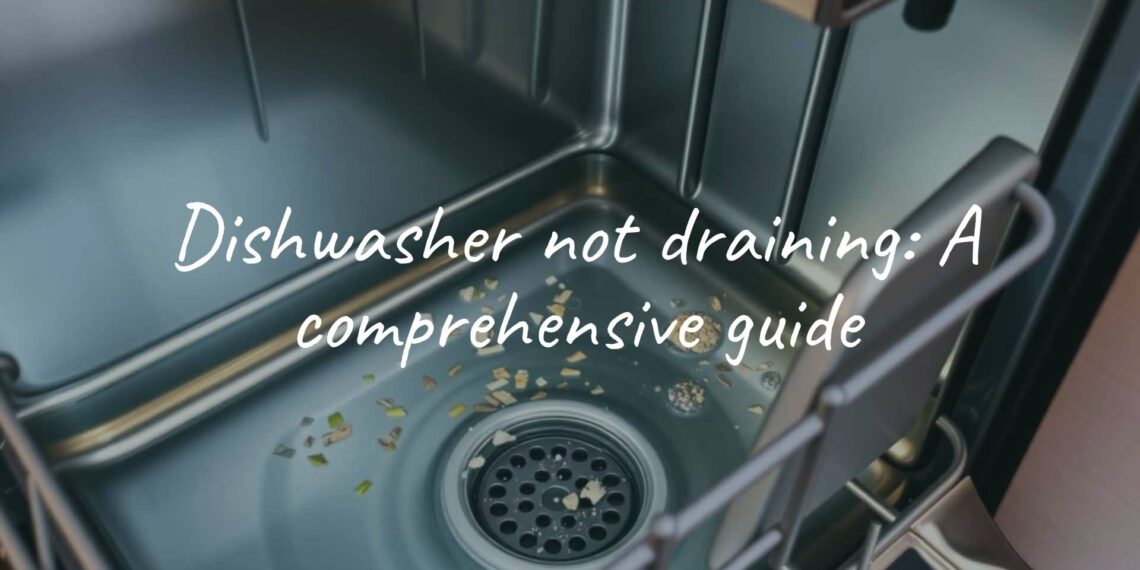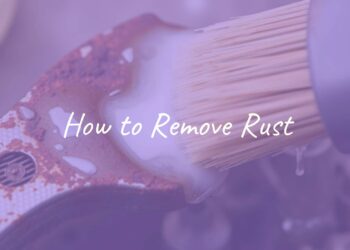When your dishwasher won’t drain, it quickly becomes more than a minor inconvenience-it creates a messy and potentially smelly problem in your kitchen. Opening the dishwasher to discover water pooled at the bottom is a common household issue. This means your dishwasher isn’t getting rid of the dirty water after a cycle. Luckily, most of the time, this problem is fixable at home and doesn’t mean your dishwasher is ruined. The cause is often a simple blockage or a smaller issue with one of its parts.
Many drainage problems can be sorted out with some basic troubleshooting, helping you avoid the cost of calling in a repair service. Before giving up or trying to mop up all the water, it helps to learn about the usual reasons dishwashers stop draining. Things like food scraps, kinks in hoses, or soap problems often lead to water not draining. This guide will break down the most common causes and straightforward steps to get your dishwasher draining again.

Why is the dishwasher not draining?
If your dishwasher has standing water after a cycle, something is blocking or stopping the water from leaving the machine. Finding out the specific cause is important so you can fix it properly. The reasons can range from basic clogs to a problem with a part inside the dishwasher. Here are the main reasons dishwashers don’t drain how they should:
Main causes of standing water in a dishwasher
- Blockages: Most commonly, food scraps or other debris get stuck somewhere in the drain system.
- Plumbing connection issues: Sometimes, the hose connected to your sink or disposal is plugged or not installed right.
- Cycle interruptions: Stopping the dishwasher mid-cycle can sometimes leave water inside.
- Detergent problems: Using the wrong type or amount of soap can make so many suds that the machine can’t drain properly.
- Air gap or drain loop troubles: If these parts get blocked or aren’t set up correctly, water can back up into the dishwasher.

Blocked drain hose or pipe
The drain hose sends dirty water from your dishwasher into your kitchen plumbing system. If this hose is clogged with grease, food, or other gunk-or if it gets bent or pinched-water can’t get out. Sometimes, this happens right after a dishwasher is installed or moved and the hose isn’t set up right. If there’s a check valve installed backwards or the hose collects buildup over time, water can’t pass through. Always look for bends or blockages in the hose if your dishwasher isn’t draining.
Clogged dishwasher filter
The filter in your dishwasher keeps food and debris from clogging up the pump and hose. You’ll usually find this filter under the lower rack at the bottom of the tub. If you don’t clean it regularly, bits of food and other particles build up and form a plug, stopping water from draining. This is actually the most common reason for dishwasher drainage problems. Rinsing the filter weekly can help keep water flowing the way it should.

Faulty drain pump or motor
The drain pump pushes water out of the dishwasher. If something like glass or a piece of hard food gets into the pump, it can jam the spinning blade inside or even break the pump. If the pump motor is weak or broken, it won’t move water out either. A faulty pump can sound strange or seem to run but not move any water. Replacing or fixing the pump is a bit harder and often needs some know-how.
Obstructions in the garbage disposal
If your dishwasher drains through the garbage disposal, any clog or jam there can stop water from flowing out. Food left inside the disposal, or not running the unit regularly, can block water from your dishwasher too. Sometimes, when new disposals are installed, a plastic plug is left in place where the dishwasher hose connects-if nobody removes it, the dishwasher won’t drain. Running the disposal before (or during) a dishwasher cycle can clear small blockages and help with drainage.
Problems with the air gap or drain loop
The air gap is usually a little cap on your sink or counter near the faucet, and the drain loop is how the drain hose is arranged under the sink. These parts prevent dirty sink water from flowing backwards into the dishwasher. If the air gap gets blocked, or if the hose sags or isn’t looped high enough, dirty water or odors may end up in your dishwasher. Check for visible blockages and make sure the hose is installed correctly.
Build-up in the drain basket
Similar to the filter, the drain basket catches bigger food pieces. Even if you have a working filter, this basket can get clogged with grease, bits of food, and grime. This stops water from reaching the drain pump and causes water to pool. Clean this area regularly to stop buildup from getting out of hand.
Incorrect dishwasher detergent use
Using the wrong type of detergent-like regular hand dish soap instead of dishwasher detergent-can fill the machine with suds. Too many suds can interfere with drainage by blocking the sensors and parts, and you’ll see foamy water that won’t go away. Always use special dishwasher detergent and follow the recommended amount to avoid this issue.
How to fix a dishwasher that won’t drain: step-by-step
A dishwasher filled with water might seem difficult to deal with, but you can often fix it yourself if you follow a simple process. Try these steps before calling someone for help:

-
Disconnect the power
Before checking or fixing anything inside your dishwasher, unplug it or turn off the breaker that supplies it with electricity. This protects you from electric shock. Only work on your dishwasher with the power off. -
Remove dishes and water
Take out all the dishes and racks for better access. Use towels, a sponge, or a small cup to remove standing water from the bottom. A wet/dry vacuum can help too. This lets you see what’s blocking the drain. -
Clean the filter
Most clogs happen here. Look at the bottom of the dishwasher, usually under the lower rack, for the filter (either a round cylinder or flat screen). Gently twist or lift it out as your manual suggests.
– Rinse it under running water, and use a soft brush to scrub away sticky gunk.
– Do not use strong cleaners or anything abrasive.
– Put the clean filter back securely. -
Check and clean the drain hose
Find the hose under the sink or behind the dishwasher. Check for bends or pinches.
– If needed, disconnect the hose (keep towels ready for spills).
– Look inside for stuck food or grease, and rinse it out.
– For big clogs, push a wire or brush through or use a hose cleaner.
– If badly damaged or blocked, replace the hose.
– Make sure the hose loops up high under the sink or goes into the air gap to stop backflow. -
Check the garbage disposal and air gap
If your dishwasher empties into the garbage disposal, run the disposal with cold water to remove any leftover food. For a newer disposal, check that any blocking plug where the dishwasher hose connects is removed. For the air gap, remove the cover and clear out any debris. Put the cap back when finished. -
Check the drain pump and valve
If other steps haven’t worked, the pump might be jammed. Listen for grinding or strange noises when the dishwasher tries to drain.
– Accessing the pump often means pulling out the dishwasher and taking off covers.
– Check for small objects blocking the pump or see if the drain valve is stuck.
– If you’re unsure, or if the pump doesn’t run at all, you might need an appliance repair person. -
Test the drain cycle
Once you clean or clear out blockages, run a drain or cancel cycle following your dishwasher’s instructions. If water leaves the tub, the problem is likely fixed. If not, repeat the steps or call for help.
How to prevent dishwasher drainage problems
A little routine care can help you avoid most problems before they start and keep your dishwasher running smoothly:
| Task | How Often | What to Do |
|---|---|---|
| Clean filter | Weekly | Rinse under water and brush off trapped debris |
| Wipe inside tub | Monthly | Use a damp sponge or a cloth to remove grime |
| Run cleaning cycle | Monthly | Use dishwasher cleaner or a mix of vinegar and baking soda |
| Inspect air gap/garbage disposal | Every few weeks | Check for and clear blockages as needed |
| Check drain hose | Twice a year | Look for kinks, pinches, or buildup |

How to load and run your dishwasher correctly
- Scrape large chunks of food into the trash before putting dishes in.
- Avoid overloading the racks so water can move freely and spray arms spin.
- Keep spray arms and the area around the filter clear of cups and utensils.
Use the right detergent
- Always buy detergent made for dishwashers.
- Follow the label for how much to use.
- Avoid using hand soap or laundry detergent inside your dishwasher.
- For hard water, use rinse aid or special detergents to stop buildup.
Keep the garbage disposal and air gap clear
- Run the disposal before starting your dishwasher and flush with cold water for 10-20 seconds.
- Check the air gap occasionally and remove any food or gunk.
Frequently asked questions about dishwashers not draining
How do I know if my drain hose is clogged?
Signs include water collecting at the bottom of your dishwasher after running it, or hearing gurgling noises during draining. If just a little water leaves, or none at all, the hose is probably blocked by food or grime. If your sink backs up when the dishwasher runs, the hose might be clogged.
What does it mean if water stays in the dishwasher after a cycle?
This means the dishwasher didn’t finish draining. If the water is clean, the last drain step may not have worked, or there’s a slow leak letting water back in later. If the water is dirty, there’s likely a clog somewhere (filter, pump, hose, or at the disposal). A tiny amount of water at the very bottom is normal for some models, but if you see puddles, something’s wrong.
Can I make my dishwasher drain manually?
Most modern dishwashers have a cancel or drain button you can press and hold to get the pump to try draining the tub. If the pump starts and drains the water, your main issue might be fixed. If it doesn’t drain when you force it, there’s probably a physical blockage or part failure.
Do all dishwashers have a drain valve?
No, some newer dishwashers rely only on the pump to move water out. Others have a separate valve that opens and closes during draining. If your model has a drain valve, check it for blockages or mechanical faults during troubleshooting.
When should I call an appliance repair service?
If you’ve tried all the common fixes-cleaning the filter and hose, checking for obstructions in the disposal or air gap, running a drain cycle-and water still won’t leave your dishwasher, it could be a pump or electrical problem that needs an expert. Also, if you aren’t comfortable working around electric parts or can’t access the drain pump, it’s safer and easier to hire a technician.

















![What to with Scrap Metal? [infographic]?](https://facts-homes.com/wp-content/uploads/2019/07/645413-POPYOV-391-120x86.jpg)





